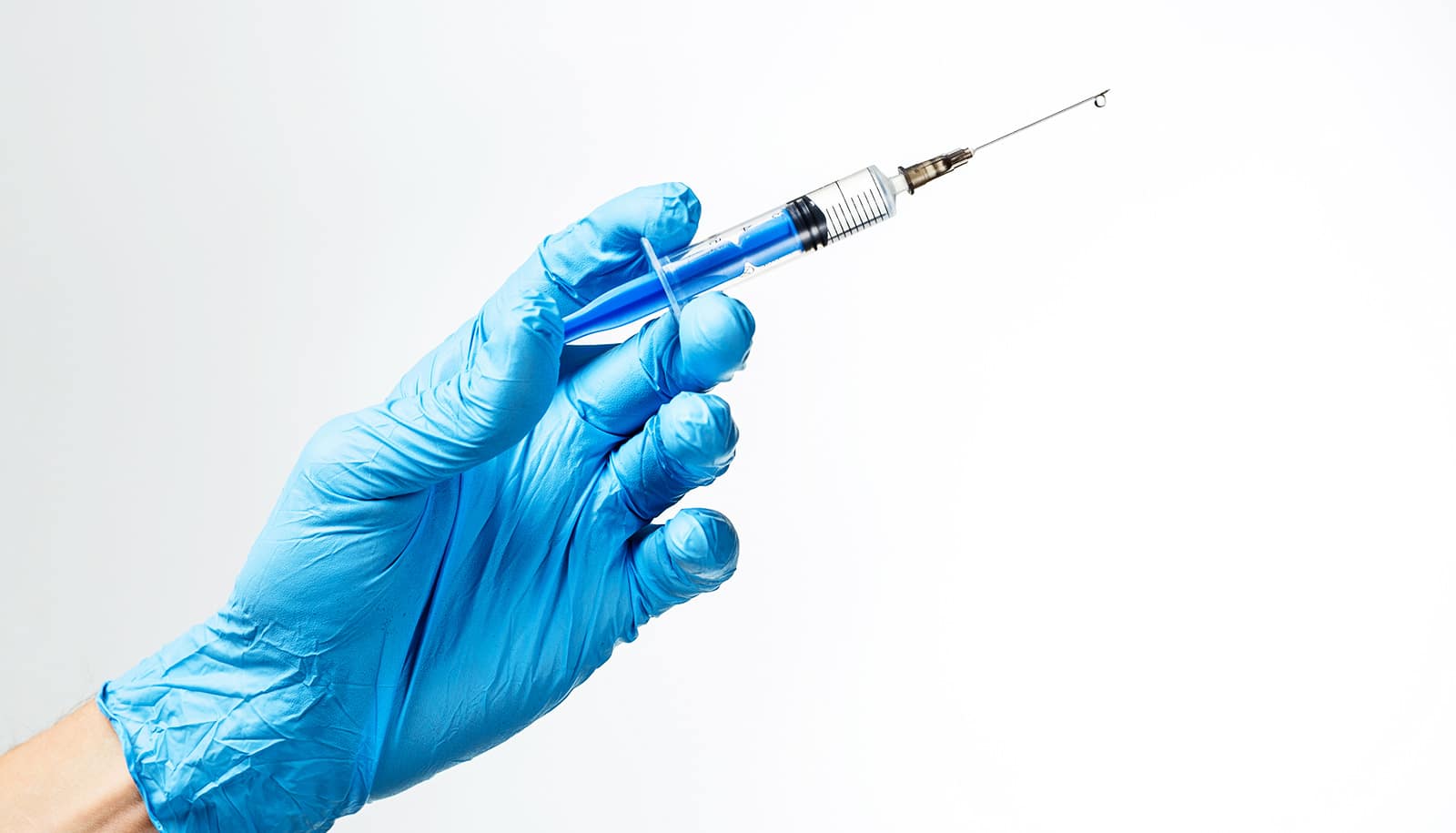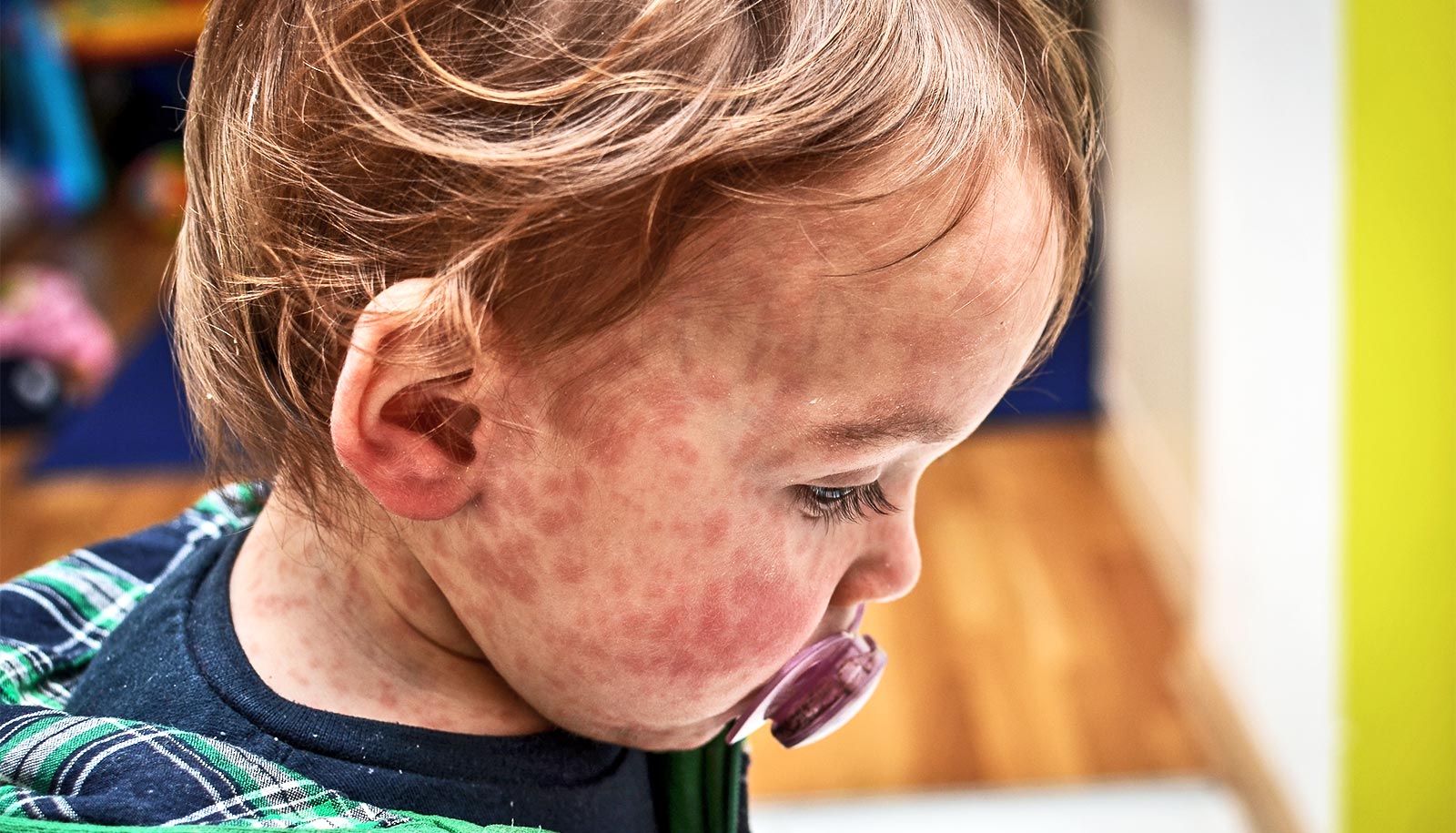A phase I clinical trial finds that influenza vaccination using Band-Aid-like patches with dissolvable microneedles is safe and well-tolerated by study participants.
In addition, the patches are as effective in generating immunity against influenza, and study participants strongly preferred them over vaccination with a hypodermic needle and syringe.
Despite the potentially severe consequences of illness and even death, only about 40 percent of adults in the United States receive flu shots each year. A new self-administered, painless vaccine skin patch containing microscopic needles may offer a solution.
Experts say the microneedle patch vaccine could also save money because it is easily self-administered, can be transported and stored without refrigeration, and is easily disposed of after use without sharps waste.
“Having the option of a flu vaccine that can be easily and painlessly self-administered could increase coverage and protection by this important vaccine.”
“Despite the recommendation of universal flu vaccination, influenza continues to be a major cause of illness leading to significant morbidity and mortality,” says first author Nadine Rouphael, associate professor of medicine (infectious diseases) at Emory University School of Medicine and principal investigator of the clinical trial.
“Having the option of a flu vaccine that can be easily and painlessly self-administered could increase coverage and protection by this important vaccine.”
The first-in-human clinical trial of the flu vaccine patches began in June 2015 with 100 participants aged 18-49 who were healthy and who had not received the influenza vaccine during the 2014-15 flu season. The study was conducted at the Hope Clinic of the Emory Vaccine Center in Atlanta and was carried out under an Investigational New Drug Application authorized by the FDA.
How to make flu vaccine spray safe for little noses
Participants were randomized into four groups: (1) vaccination with microneedle patch given by a health care provider; (2) vaccination with microneedle patch self-administered by study participants; (3) vaccination with intramuscular injection given by a health care provider; and (4) placebo microneedle patch given by a health care provider.
“People have a lot of reasons for not getting flu vaccinations,” says senior coauthor Mark Prausnitz, professor of chemical and biomolecular engineering at Georgia Institute of Technology.
“One of the main goals of developing the microneedle patch technology was to make vaccines accessible to more people. Traditionally, if you get an influenza vaccine you need to visit a health care professional who will administer the vaccine using a hypodermic needle.
“The vaccine is stored in the refrigerator, and the used needle must be disposed of in a safe manner. With the microneedle patch, you could pick it up at the store and take it home, put it on your skin for a few minutes, peel it off and dispose of it safely, because the microneedles have dissolved away. The patches can also be stored outside the refrigerator, so you could even mail them to people.”
Vaccination with the microneedle patches was safe, with no adverse events reported. Local skin reactions to the patches were mostly faint redness and mild itching that lasted two to three days. No new chronic medical illnesses or influenza-like illnesses were reported with either the patch or the injection groups.
Will this microneedle patch help wipe out measles?
Antibody responses generated by the vaccine, as measured through analysis of blood samples, were similar in the groups vaccinated using patches and those receiving intramuscular injection, and these immune responses were still present after six months. More than 70 percent of patch recipients reported they would prefer patch vaccination over injection or intranasal vaccination for future vaccinations.
No significant difference was seen between the doses of vaccine delivered by the health care workers and the volunteers who self-administered the patches, showing that participants were able to correctly self-administer the patch. After vaccination, imaging of the used patches found that the microneedles had dissolved in the skin, suggesting that the used patches could be safely discarded as non-sharps waste. The vaccines remained potent in the patches without refrigeration for at least one year.
The microneedle patches used in the study were designed at Georgia Tech and manufactured by the Global Center for Medical Innovation in Atlanta.
Researchers also are working to develop microneedle patches for use with other vaccines, including measles, rubella, and polio.
“Influenza vaccination using microneedle patches is well-tolerated, well-accepted, and results in robust immunologic responses, whether administered by health care workers or by the participants themselves. These results provide evidence that microneedle patch vaccination is an innovative new approach with the potential to improve current vaccination coverage and reduce immunization costs,” the authors write in The Lancet.
The National Institute of Biomedical Imaging and Bioengineering of the National Institutes of Health funded the work.
Source: Georgia Tech



